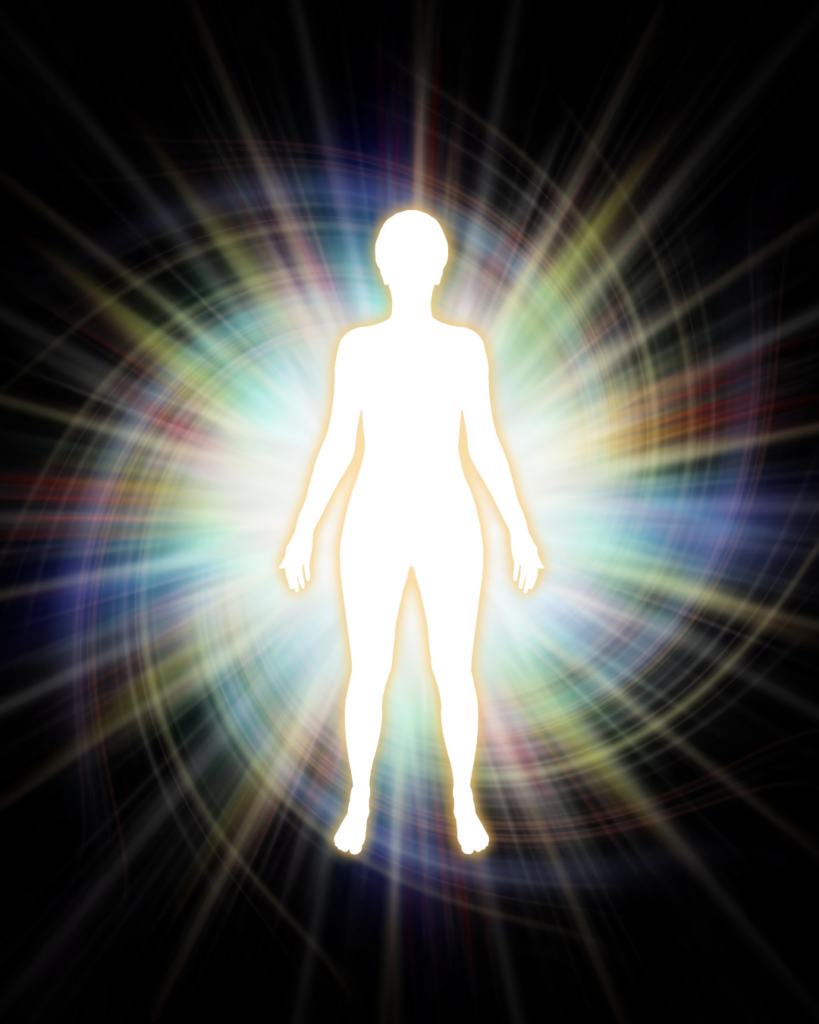The Neurological Basis of Spiritual Perception
When people report seeing spirits, ghosts, or apparitions, what’s actually happening in their brains? This question has fascinated researchers across disciplines from neuroscience to parapsychology. What we’ve discovered is that the visual cortex—the part of the brain responsible for processing information from our eyes—plays a dual role that helps explain these experiences. This same neural architecture is also intimately involved in generating and processing mental imagery, creating an intriguing overlap between external perception and internal visualization.
In some individuals, when an image forms within the brain—whether from memory, imagination, or possibly from subtle environmental cues beyond normal awareness—the subjective experience can be indistinguishable from seeing with the physical eyes. This phenomenon, sometimes called “projection,” creates visual experiences that feel externally generated despite potentially originating from internal neural processes. This doesn’t necessarily invalidate these experiences, but rather points to the complex interplay between our brains, consciousness, and environment that I explore in my research on perceptual phenomena.
Neuroimaging studies have shown remarkable similarities in brain activation patterns between actual visual perception and vivid mental imagery, suggesting that our brains may process both types of information through partially overlapping neural pathways. This blurred line between seeing and visualizing creates a fascinating neurological foundation for understanding how some people might perceive spirits or other non-physical entities.
Right-Brain Dominance and Enhanced Perception
One of the most interesting patterns observed in individuals who frequently report spiritual or paranormal perceptions is a tendency toward right-brain dominance. The right hemisphere of the brain specializes in holistic, intuitive, and non-linear processing, while the left hemisphere tends toward logical, analytical, and sequential thinking. When right-brain functions predominate, with corresponding reduction in left-brain filtering mechanisms, individuals often experience enhanced sensitivity to subtle environmental stimuli that others might miss.
Three groups particularly tend to show this right-brain dominance pattern:
1. Creative individuals: Artists, musicians, writers, and other creatives often demonstrate heightened right-brain activity. This neural architecture supports their creative capabilities but also potentially opens them to perceiving patterns and presences that others might not register. Throughout history, creative individuals have reported spiritual visions and encounters at rates significantly higher than the general population.
2. Young children: The developing brain of a child hasn’t yet fully established the strong hemispheric specialization seen in adults. Children typically show greater right-brain activity and haven’t yet developed the robust filtering mechanisms that adults use to screen out “irrelevant” perceptual information. This may explain why children often report seeing imaginary friends or spiritual entities with greater frequency and conviction than adults.
3. Individuals under chronic stress: Prolonged stress can alter brain function in ways that suppress left-brain analytical processes while amplifying right-brain vigilance mechanisms. This neurological adaptation, designed to enhance survival by heightening awareness of potential threats, can inadvertently increase sensitivity to subtle environmental cues and anomalies that might otherwise be filtered out.
This right-brain dominance pattern allows these individuals to conceptualize and integrate environmental stimuli that remain invisible or unintelligible to most people. This isn’t a defect or delusion but rather an alternative perceptual mode that processes information differently, as I discuss in my workshops on intuitive development.
Altered States and Liminal Perception
Beyond baseline neurological differences, certain states of consciousness appear particularly conducive to spiritual perception. The hypnagogic state—the transitional period between wakefulness and sleep—represents one of the most common conditions for experiencing spiritual or paranormal phenomena. During this liminal state, the brain produces theta waves associated with dreamlike imagery while still maintaining partial waking awareness, creating ideal conditions for experiencing visionary content that feels both real and significant.
Similar neural patterns occur in meditative states, particularly those involving relaxed but alert awareness. By intentionally relaxing your visual focus—allowing your gaze to soften and widen rather than fixating on specific points—you can simulate aspects of these transitional states even while fully awake. This technique, sometimes called “soft focus” or “peripheral vision,” reduces the dominance of the analytical left brain and allows more information to be processed through right-brain pathways.
Interestingly, many traditional spiritual practices across cultures independently discovered and utilized these neurological principles. From shamanic practices involving drumming and rhythmic movement to contemplative traditions emphasizing specific gazing techniques, humans have developed numerous methods for accessing these perceptually enhanced states. These approaches aren’t merely cultural or symbolic—they reflect sophisticated (if implicit) understanding of how to modulate brain function to facilitate expanded perception, which I explore in my spiritual practices research.
Beyond Neurological Explanations
While understanding the neurological correlates of spiritual perception provides valuable insights, some aspects of these experiences resist purely physiological explanations. Particularly compelling are cases where apparitions demonstrate qualities that challenge reduction to internal imagery or misperception.
Anecdotal reports throughout human history describe instances where perceived spirits:
- Appear solid and three-dimensional rather than transparent or ethereal
- Interact with the physical environment (moving objects, creating sounds, etc.)
- Communicate specific information unknown to the percipient
- Are witnessed simultaneously by multiple observers
- Disappear suddenly or pass through physical barriers
These characteristics suggest a potential interplay between consciousness and environment that transcends current scientific understanding. While skeptics might attribute such reports to hallucination, confabulation, or perceptual errors, the consistency of these accounts across cultures and historical periods warrants serious consideration of alternative explanations.
My own research into environmental consciousness interactions suggests that certain locations may facilitate spiritual perception through complex interactions between geological, electromagnetic, and psychological factors. These “thin places,” as they’re sometimes called in Celtic tradition, might represent areas where the boundary between ordinary and non-ordinary perception becomes more permeable.
Developing Your Own Perceptual Sensitivity
Whether you’re skeptical about spirits or personally convinced of their reality, developing greater perceptual sensitivity offers valuable benefits regardless of your interpretive framework. The same capacities that might allow perception of spirits also enhance creativity, intuition, and psychological insight.
If you’re interested in exploring these perceptual modes, consider these approaches:
-
Practice relaxed awareness: Rather than straining to see spirits, cultivate a state of relaxed, open awareness. Gently expand your peripheral vision while maintaining a soft, unfocused gaze. This reduces left-brain dominance and allows more subtle information to reach consciousness.
-
Pay attention to transitional states: Notice perceptions that arise as you’re falling asleep or waking up. Without immediately dismissing or over-interpreting these experiences, simply observe them with curiosity. Keep a journal by your bed to record significant experiences.
-
Reduce perceptual noise: Our modern environment bombards us with sensory input that can overwhelm subtle perception. Create periods of reduced stimulation—quiet time without electronic devices, media, or other distractions—to allow your perceptual systems to recalibrate to more subtle levels of information.
-
Develop right-brain functions: Activities that engage the right hemisphere—art, music, poetry, dance, time in nature—help balance our culturally encouraged left-brain dominance. Regular engagement with these activities enhances overall perceptual sensitivity.
-
Practice objective observation: Whether you experience something unusual or not, cultivate the ability to observe without immediately jumping to interpretations. This balanced approach allows you to gather more accurate information before deciding what an experience might represent.
Remember that the goal isn’t necessarily to “see spirits” but rather to expand your perceptual capabilities and relationship with consciousness. Whether unusual perceptions represent externally existing entities, aspects of your own psyche, or some combination of both, approaching them with mindful awareness yields greater understanding than either dismissive skepticism or uncritical acceptance.
By understanding the neurological, psychological, and possibly metaphysical dimensions of spiritual perception, we can approach these experiences with both scientific rigor and experiential openness—a balanced perspective that honors both the mystery of consciousness and our evolving understanding of how the mind perceives reality. ♦
𝙁𝙤𝙧 𝙢𝙤𝙧𝙚 𝙞𝙣𝙛𝙤𝙧𝙢𝙖𝙩𝙞𝙤𝙣 𝙖𝙗𝙤𝙪𝙩 𝙅𝙖𝙘𝙠 𝙍𝙤𝙪𝙧𝙠𝙚 𝙖𝙣𝙙 𝙝𝙞𝙨 𝙨𝙚𝙧𝙫𝙞𝙘𝙚𝙨 𝙫𝙞𝙨𝙞𝙩 𝙬𝙬𝙬.𝙟𝙖𝙘𝙠𝙧𝙤𝙪𝙧𝙠𝙚.𝙣𝙚𝙩
Tags: Spirit Perception, Apparitions, Ghosts, Neuroscience, Brain Function, Right Brain Dominance, Consciousness, Jack Rourke, The Rational Psychic, Hypnagogic State, Intuitive Development, Sixth Sense, Spiritual Perception, Paranormal Experiences, Expanded Awareness






